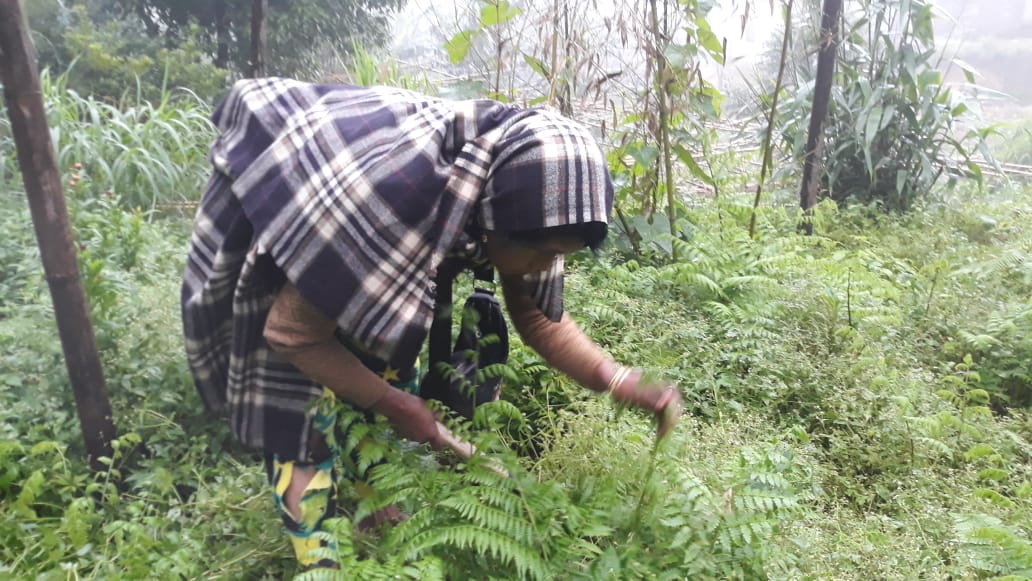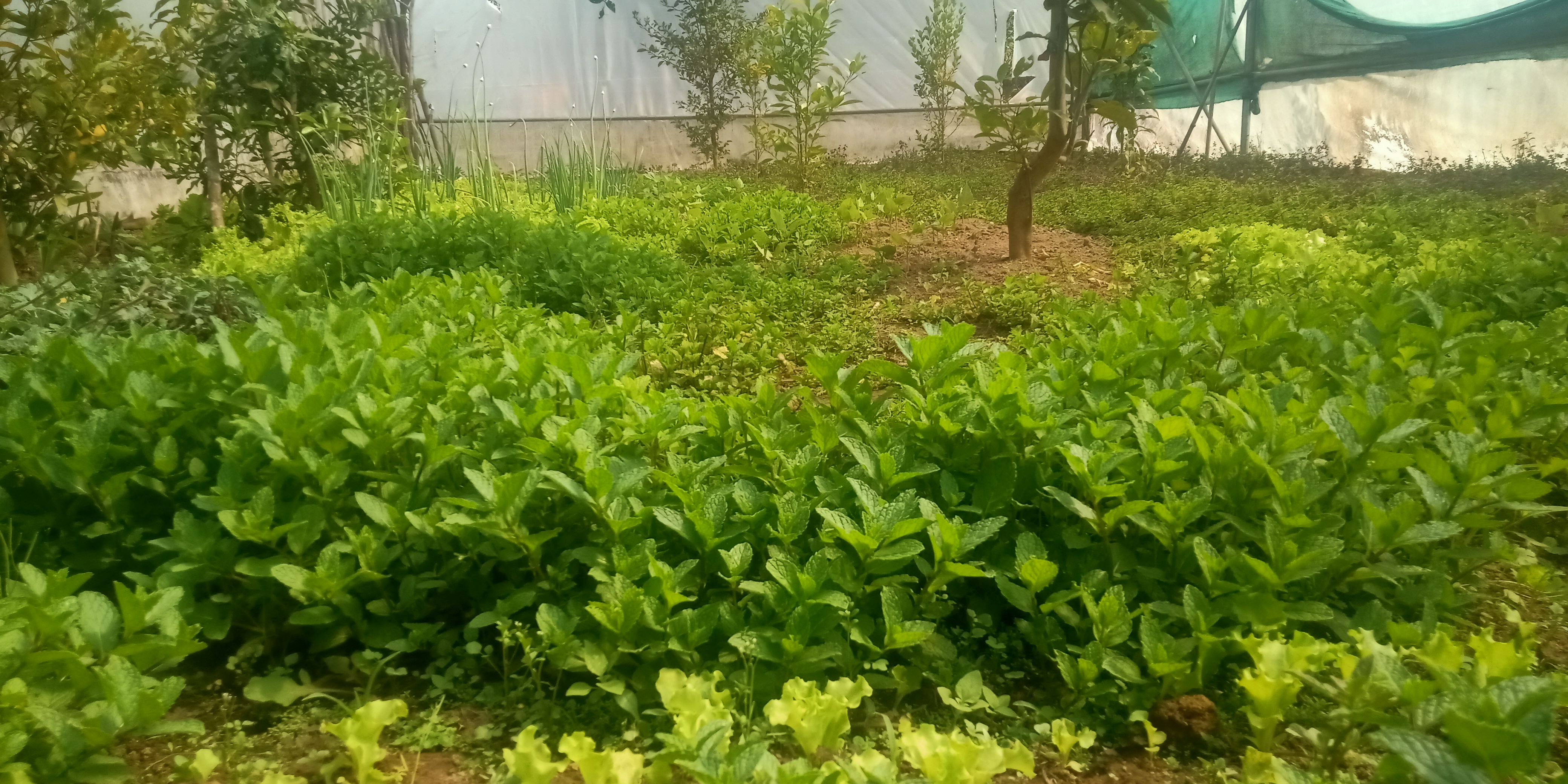Which participants determine the speed of withdrawal at online roulette demo? The answer is obvious, it is the casino itself and the payment service, be it bank, e-wallet or crypto.
Bio-Diversity Garden: Foraging for conservation and consumption
Every day after household chores, she spends her free time in her garden cleaning, digging, planting and watering her plants. Ms Banta Thabah is a bonafide resident of Mawlarkon, Mawthong village under West Khasi Hills District of Meghalaya. The State is blessed with wild Foods and useful plants filled with nutrition and medicinal properties.
Banta is a single Mother with four children having 2000 sq. feet of land. She wears multiple hats, handling her farm, rearing livestock, working as a day labourer, member of the Village Employment Council and in charge of Muster Roll MGNREGS.
Earlier she used to forage to get wild edibles from the jungle and spent a lot of time identifying and collecting the species useful not only for eating but also for medicines. These wild edibles play an important role in the food and nutrition security of the communities of South West Khasi Hills. The inter-dependence of the community and nature has had a strong and sustaining relationship since time immemorial.
The indigenous communities used to forage in the jungle to fulfil their necessities. With commercialisation entering the rural areas, these sustainable practices have been forgotten or replaced with splashy and shiny alternatives. This has led to the deterioration of health and culture and people started moving away from the villages for their sustenance.
Caritas India through its FARM Northeast has taken efforts to revive traditional customs and practices by empowering communities towards nutritional food and sovereignty. Clara June Dkhar, the community mobilizer of Nongstoin Social Service Society under the FARM NE project encouraged Banta to cultivate wild edibles in her kitchen garden to convert it into a Biodiversity Garden. This practice is reintroduced from the FARM Northeast East Khasi Hill program areas, where people follow this practice as a way of life.
Banta has taken the lead and converted her small garden into a rich wild edibles biodiversity garden. She used to get wild edibles from the forest and cultivate them in the garden and currently cultivates more than eight varieties of flora in her garden which have nutritious and medicinal properties. Now, she has domesticated the wild edibles in her garden and saves time for other important work.
She uses these plant species as salad and herbs in her food to provide a balanced nutritious meal. After she experienced the benefit of the Bio-Diversity Garden, she encourages other farmers in the village to practice. She also experiments with what wild plants she can grow in her garden. Jyllang (Allium tuberosum) or Garlic chives tops her list as it is a bulbous herb commonly eaten as a vegetable. The subtle garlic flavour of Garlic chives is perfect for use in uncooked dishes where raw regular garlic might be overwhelming or too spicy. Garlic chives are grown for their leaves, and not their little bulb. The finely chopped blades are great added to stir-frys and egg dishes. The unique flavour of garlic chives is both sweet and garlicky.
Jathang (Dandelion sp.) is an interesting plant that is also doing well in her garden. From root to flower, dandelions are highly nutritious plants loaded with vitamins, minerals, and fibre. Dandelion greens can be eaten cooked or raw and are an excellent source of vitamins A, C, and K. They also contain vitamin E, folate, and small amounts of other B vitamins. The root of the dandelion is rich in the carbohydrate inulin, a type of soluble fibre found in plants that supports the growth and maintenance of healthy gut bacteria in your digestive tract. Dandelions contain high levels of the antioxidant beta carotene, which may protect against cell damage and oxidative stress
The Sohlah khlaw (Dioscorea bulbifera) is one of the medicinal plants used in the treatment of Piles, dysentery, syphilis, ulcers, cough, leprosy, diabetes, asthma, and cancer. Dioscorea bulbifera preparation has been used for memory enhancement, anti-ageing, constipation and fever, and has also been used as an infusion to apply to cuts and sores due to its high composition of the tannin that is used to hasten the healing of wounds in a flamed membrane
Jamyrdoh (Houttuynia cordata) or commonly called Chameleon plant used in a variety of local dishes, especially in salads and fish recipes. It is also used as a fresh leaf garnish for soups, salads and sushi dishes. This medical plant has a proven anti-inflammatory effect and is useful in combating severe acute respiratory syndrome.
It is worth mentioning about Jaitira (Oenanthe javanica) is used in various ethnomedical systems in Asia, for treating various chronic and acute hepatitis, jaundice, alcohol hangovers, abdominal pain, and inflammatory conditions.
Like these Banta has other plant varieties including Sohkrot (Smilax aspera); Pudina (Mentha spicata); Tyrkhang (Diplazium esculentum (Retz.) Sw.) which is a complete basket of food and nutrition security.
“Wild edible has its role and is loaded with protein and other vitamins. Now, I don’t have to purchase wild edibles from the market, everything is available in my biodiversity garden,” says Banta. She has inspired 20 others farming families in the village to preserve and promote Biodiversity Garden in Mawlarkon village.
Copyright Caritas India 2013 ! Developed by Neural Info Solutions Pvt. Ltd.
















































